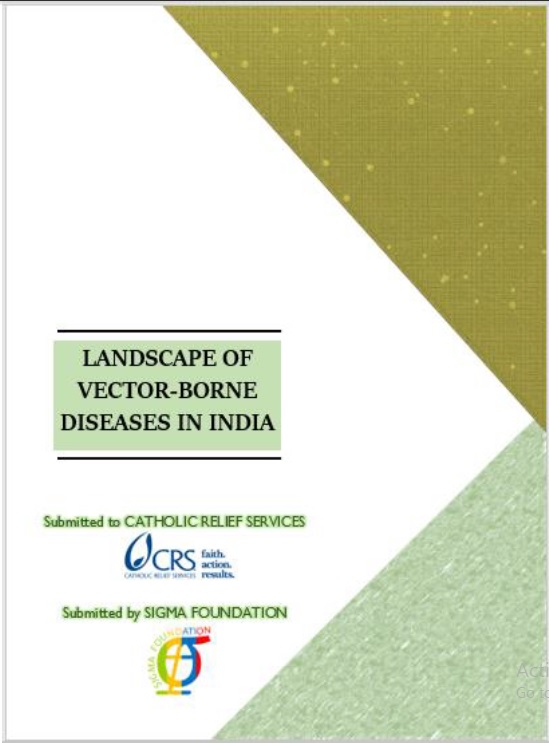Landscape of Vector Borne Diseases in India
Contributed By: Dr. M. N. Roy, Dr. Sayantani Chatterjee, Dr. Tanusree Dutta, Ms. Mayuri SenOver the last 20 years, it has become evident that the health sector alone cannot succeed in the prevention and control of so many diseases, including VBDs, and these require a multi-sectoral approach. India already has a high burden of non-communicable diseases along with a rising trend of infectious diseases, a large part of which is vector-borne. In the future days, the burden of infectious diseases is going to affect more of the poorer and young populations. India is endemic for six major VBDs viz. Malaria, Lymphatic Filariasis (LF), Japanese Encephalitis (JE), Dengue (DEN), Chikungunya (CHIK) and Kala azar (KA).
SIGMA Foundation was appointed by Catholic Relief Services (CRS) to conduct a study on the landscape of vector-borne diseases in India. Catholic Relief Services is a leading international humanitarian agency working in more than 100 countries and territories to alleviate poverty and suffering. Headquartered in USA, CRS has been active in India since 1946, working in the areas of health, agricultural livelihoods, child protection, and emergency relief and recovery.
The overall objectives of the study were a) to explore the landscape of vector-borne disease and b) to understand government program and priorities, key gaps, competitive landscape, donor landscape, and donor priorities. The study was conducted in two stages. In the first stage, a detailed scenario of the vector-borne diseases in India was provided along with the list of high priority states based on desk review of publicly accessible and reliable secondary data. SIGMA Foundation assisted CRS to identify three vector-borne diseases and four vulnerable states where CRS would like to intervene in the future. In the second stage of the study, qualitative data was collected from a small number of Government Officials to assess the existing government programs and priorities, key gaps, competitive landscape related to the selected vector-borne diseases.
The study was assigned on the beginning of September and the final report was submitted on the middle of October. The report has called attention to the top three threatening vector-borne diseases prevailing in India and has identified the most vulnerable high burden states.

